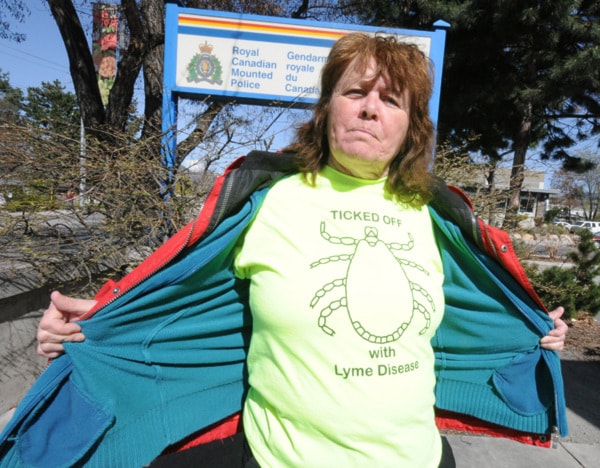When it came to her failing health, Sue McDougall’s fear of the unknown was only overshadowed by the debilitating consequences of her delayed diagnosis.
 Unfortunately, in many situations those who have Lyme Disease do not test positive with all methods and those with the infection can often be misdiagnosed. In McDougall’s case she believes the infection was a result of a tick bite.
Unfortunately, in many situations those who have Lyme Disease do not test positive with all methods and those with the infection can often be misdiagnosed. In McDougall’s case she believes the infection was a result of a tick bite.
“It’s a devastating, debilitating disease and it’s so sad that because of what it imitates, just about any disease you can imagine,” said McDougall, who has made a significant recovery since receiving the proper treatment.
She thinks the infection happened in 2009 and despite trips to the doctors did not find out until 2011 what the real problem was.
“I went two years without treatment and during that time the bacteria had set in,” said McDougall. “You’re weak, you lose your memory, they call it brain fog. You can’t concentrate, you get stiffness in the jaw, you get a stiff neck and weakness.
“At one point I was actually pricing out wheelchairs, I couldn’t walk to the street corner,” she said.
McDougall believes the Canadian medical community is behind where it should be in testing and treating for the infection.
The good news was that a private members bill by Green Party Leader Elizabeth May called the National Lyme Disease Strategy Act became law last December. It calls on the government to make a concerted effort to track statistics relating to the disease and develop guidelines for prevention, diagnosis, treatment and an awareness campaign.
There are some medical groups that do not support the law in its entirety, including the Association of Medical Microbiology and Infectious Diseases Canada. The organization indicated there is no controversy about the existence of the disease but that it is chronic. The group did agree there were some problems with diagnosis, especially in Western Canada, where doctors had not previously encountered it.
McDougall added because the symptoms sometimes resemble those of ALS, Parkinson’s Disease or forms of dementia some people wind up institutionalized or in care homes. The most common indicators of Lime Disease include flu-like symptoms (out of season), fatigue, stiffness, joint pain and dizziness.
As it worsens, without treatment, symptoms can include neurological problems like paralysis, vision and hearing. Although infection is more likely to occur in rural areas in the warmer months, it can happen at any time of the year and in urban settings. In some instances a “bull’s eye” rash will occur following the bite but that is not always the case.
As part of its awareness campaign, CanLyme has initiated the Lyme Sucks Challenge. Participants are urged to cut a lime in half and share it with someone else and take a video then donate $10 (or $100 if you don’t take the challenge) and then nominate three others on the video and post it to social media with the hashtag #lymesuckschallenge.
Five members of the Penticton RCMP recently took the up the cause and raised $100 and challenged others including Penticton Fire Chief Wayne Williams, Penticton and District Search and Rescue and other police detachments across the country.
“This is a great cause and Sue is one of our Citizens On Patrol members and volunteers her time, so it’s a little bit of payback,” said Cpl. Don Wrigglesworth, who was one of the participants.
